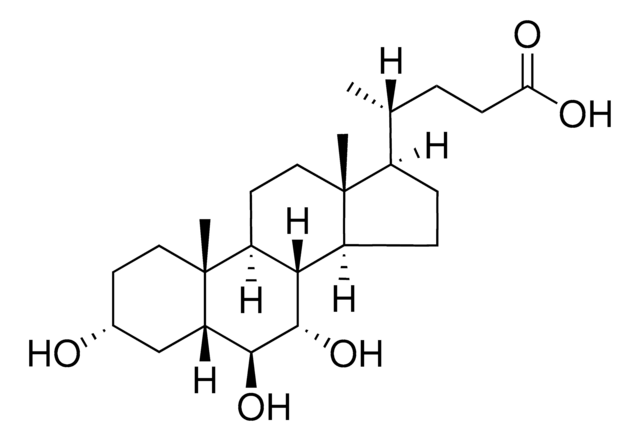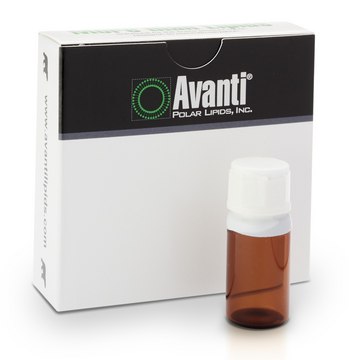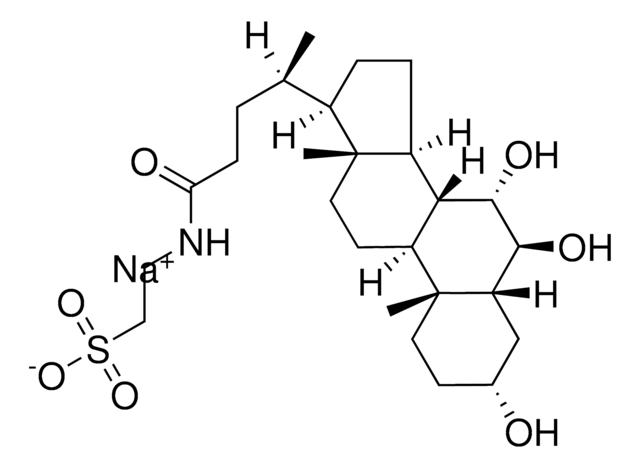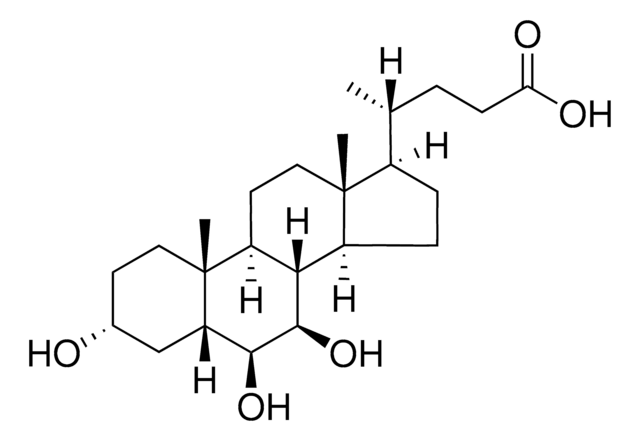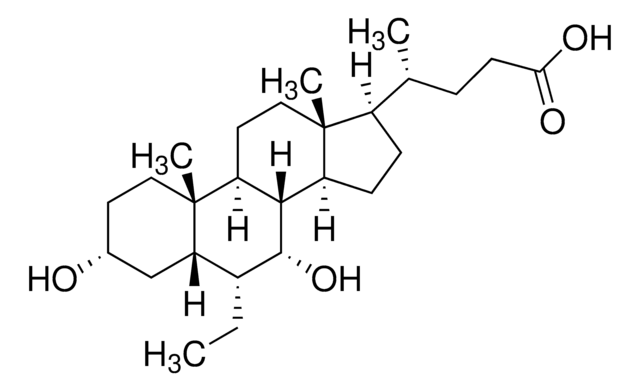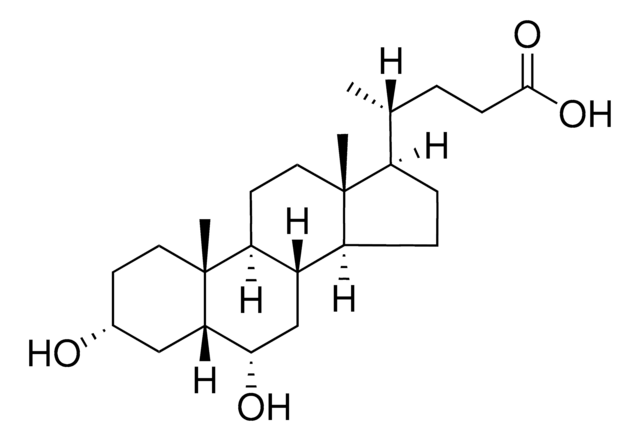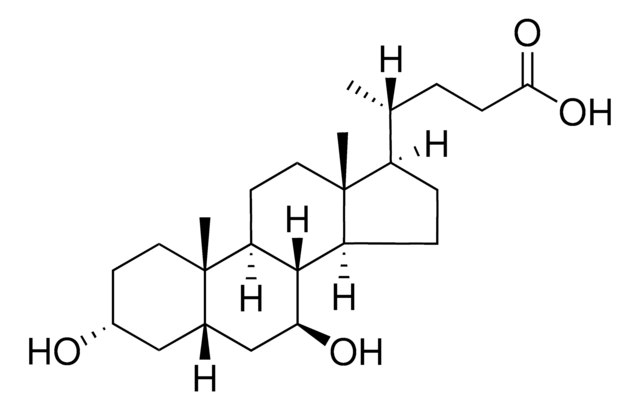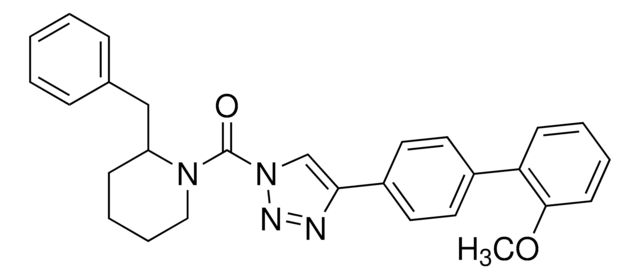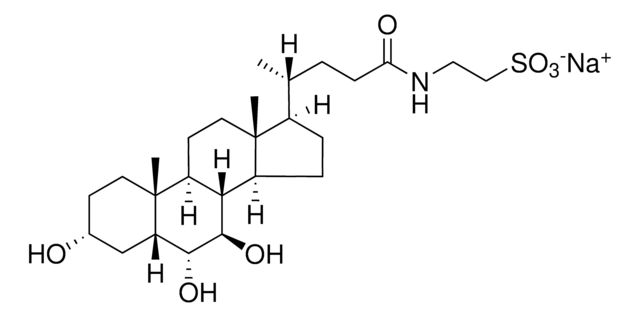推荐产品
方案
≥98% (HPLC)
表单
powder
旋光性
[α]/D +59 to +65°, c = 0.5 in methanol
颜色
white to beige
溶解性
DMSO: 2 mg/mL, clear
储存温度
−20°C
SMILES字符串
O[C@H]1[C@H]2[C@@](C3C([C@H]1O)C4[C@@](C(CC4)C(CCC(=O)O)C)(CC3)C)(CC[C@H](C2)O)C
InChI
1S/C24H40O5/c1-13(4-7-19(26)27)15-5-6-16-20-17(9-11-23(15,16)2)24(3)10-8-14(25)12-18(24)21(28)22(20)29/h13-18,20-22,25,28-29H,4-12H2,1-3H3,(H,26,27)/t13?,14-,15?,16?,17?,18+,20?,21+,22-,23-,24-/m1/s1
InChI key
DKPMWHFRUGMUKF-CWNVCPLQSA-N
应用
β-Muricholic Acid has been used as a bile acid to study its effects on the expression of pluripotency, stemness, and inflammatory genes in primary mouse hepatocytes (PMH) and tumor-initiating stem-like cells(TICs). It has also been used as a bile acid to study its effects on gut transit ingnotobiotic or conventional mouse models.
生化/生理作用
β-Muricholic Acid is a naturally occurring trihydroxy hydrophilic bile acid that is produced in the liver of murine. It serves as a biliary cholesterol-desaturating agent and aids in the dissolution of cholesterol gallstones.
β-Muricholic acid (β-MCA) is a natural murine-specific bile acid. β-Muricholic acid has been shown to reduce the absorption of cholesterol. It also has some activity as a farnesoid X receptor antagonist.
Murine-specific bile acid, farnesoid X receptor antagonist
储存分类代码
11 - Combustible Solids
WGK
WGK 3
闪点(°F)
Not applicable
闪点(°C)
Not applicable
历史批次信息供参考:
分析证书(COA)
Lot/Batch Number
Xiaobei Pan et al.
Metabolites, 7(2) (2017-06-21)
Certain endogenous bile acids have been proposed as potential therapies for ameliorating Alzheimer's disease (AD) but their role, if any, in the pathophysiology of this disease is not currently known. Given recent evidence of bile acids having protective and anti-inflammatory
Kyosuke Fujita et al.
Lipids, 52(4), 335-344 (2017-03-21)
The farnesoid X receptor (FXR) is a major nuclear receptor of bile acids; its activation suppresses sterol regulatory element-binding protein 1c (SREBP1c)-mediated lipogenesis and decreases the lipid contents in the liver. There are many reports showing that the administration of
Laura Conde de la Rosa et al.
Journal of hepatology, 74(6), 1429-1441 (2021-01-31)
Besides their physiological role in bile formation and fat digestion, bile acids (BAs) synthesised from cholesterol in hepatocytes act as signalling molecules that modulate hepatocellular carcinoma (HCC). Trafficking of cholesterol to mitochondria through steroidogenic acute regulatory protein 1 (STARD1) is
Ylva Bonde et al.
PloS one, 11(1), e0147772-e0147772 (2016-01-30)
High endogenous production of, or treatment with muricholic bile acids, strongly reduces the absorption of cholesterol. Mice abundant in muricholic bile acids may therefore display an increased resistance against dietary induced weight gain, steatosis, and glucose intolerance due to an
David Q-H Wang et al.
Journal of lipid research, 43(11), 1960-1968 (2002-10-29)
This study investigated whether beta-muricholic acid, a natural trihydroxy hydrophilic bile acid of rodents, acts as a biliary cholesterol-desaturating agent to prevent cholesterol gallstones and if it facilitates the dissolution of gallstones compared with ursodeoxycholic acid (UDCA). For gallstone prevention
我们的科学家团队拥有各种研究领域经验,包括生命科学、材料科学、化学合成、色谱、分析及许多其他领域.
联系技术服务部门